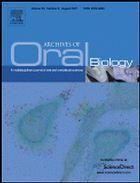
“The objective of this study was to observe the effect of medical cannabis in benign essential blepharospasm (BEB) as an adjunct to botulinum toxin.
Three out of four patients (75%) reported symptomatic improvement.
Medical cannabis has made great strides as a treatment modality for symptom relief for many disease processes, including muscle spasms related to multiple sclerosis. Medical cannabis is an accepted therapy for muscle spastic disorders.
We believe that this observational case series provides a backdrop to exploring prospective, double-masked studies to determine the therapeutic effect of cannabis for patients suffering from BEB” https://www.ncbi.nlm.nih.gov/pmc/articles/PMC5764009/
http://www.tandfonline.com/doi/abs/10.1080/01658107.2017.1318150?journalCode=ioph20
“Blepharospasm is any abnormal contraction or twitch of the eyelid” https://en.wikipedia.org/wiki/Blepharospasm
“Cannabinoid agonists in the treatment of blepharospasm – A case report study. This case study demonstrates that the therapy with a cannabinoid agonist may provide a novel tool in the treatment of blepharospasm and maybe of other multifactorial related movement disorders.” http://www.nel.edu/userfiles/articlesnew/NEL251204A03.pdf








